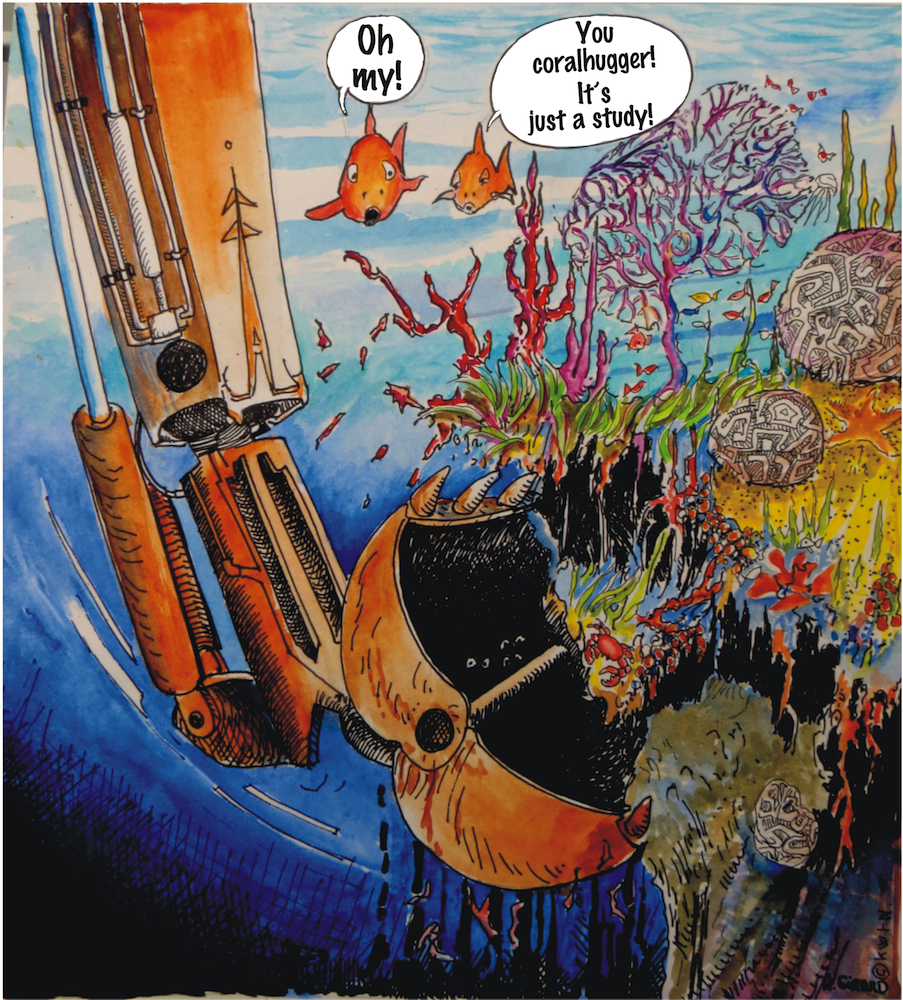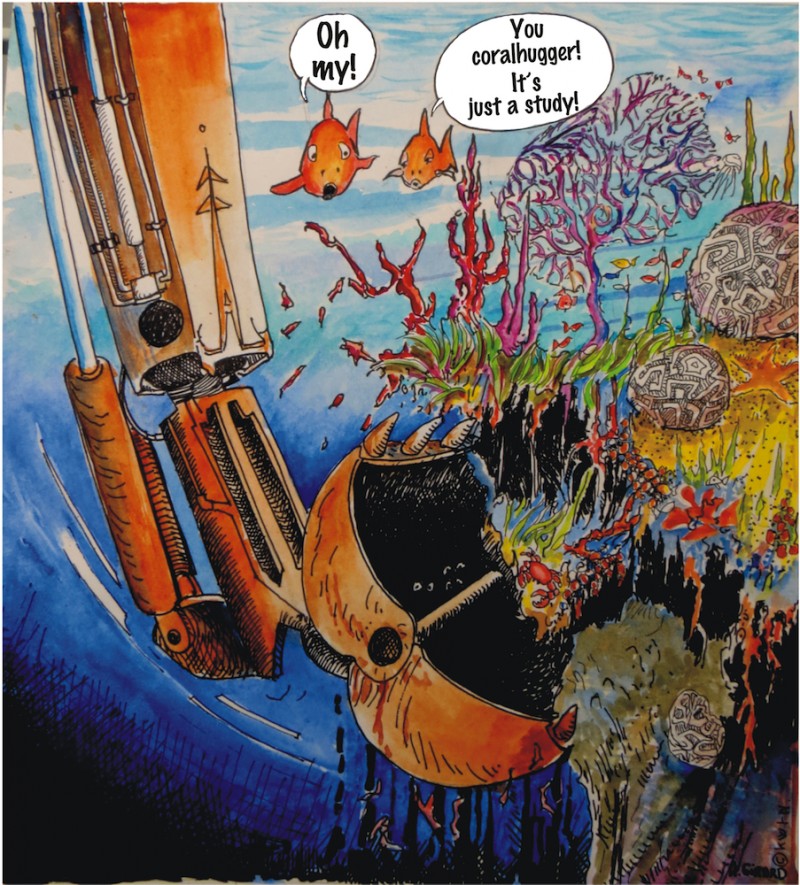The Referendum To Nowhere
Naja and Arnaud Girard……
Can you stand another channel widening article? This one will surprise you – we promise.
Interviews with representatives of the US Army Corp of Engineers and NOAA/Florida Keys National Marine Sanctuary revealed that nearly everything we have heard so far about the $ 3 Million dollar dredging feasibility study has been wrong. There won’t be a study about local economic impacts. In fact, there is not even going to be a study, regardless of the outcome of the referendum on October 1st.
As it stands, Sanctuary regulations prohibit dredging and according to Sean Morton, Superintendent of the Florida Keys National Marine Sanctuary, “Current regulations do not provide a mechanism to permit this type of dredging.” As long as regulations prohibit dredging in the Sanctuary, “I do not believe that Corps of Engineers will commit study funds to do the study,” says Eric Bush, Chief, Planning and Policy Division, USACE, Jacksonville. Bush says the Army Corp will not pursue funding a study unless they get a ‘head nod’ from those in charge of the Sanctuary.
So the next question is: Will Sanctuary officials move to change the law? “Our role,” says Morton, “is to manage and protect Sanctuary resources. Typically regulatory changes result in tightening up resource protections, not loosening them. We have zero plans to initiate a change in regulations that would facilitate this dredging project.” Morton says, “There will be no ‘head nod’”.
Let’s see if we understand this correctly: The Army Corp will only contemplate conducting a feasibility study if there is a change in the law prohibiting dredging and Sanctuary officials do not intend to change the law. So, why are we even voting on this? “The day after the referendum our regulations [prohibiting dredging] will be exactly the same,” says Morton.
So, what is this referendum meant to achieve?
That is the interesting question and the answer comes through in one simple fact: Dredging in the Keys has become taboo. As recently as this past April, the County Commission unanimously refused to loosen their local ban on new dredging. In Key West opposition to dredging is just as fierce.
But if you own Pier B or a Conch Train and you make millions of dollars off cruise ships you do have to worry about making things convenient for them. This concern is not imaginary paranoia. The cruise ship industry is extraordinarily fickle and temperamental. Overnight, for a myriad of reasons, the entire industry can decide to skip a port of call. It does happen. In Houston cruise ships completely disappeared after cruise companies realized their passengers liked Galveston better, leaving the City millions of dollars in debt for its 7-year old $ 108 Million empty terminal. Norfolk, Baltimore, Alabama, Boston, Honolulu and San Diego have all suffered a similar fate. Arguably, the size of the channel could be one of those factors. But without local support it might be very hard to convince NOAA or the US Congress to give up the dredging ban that stands in the way of channel widening. And that is the pickle.
But, if you are a student of Machiavelli, you might try this 1-2-3 combo chess maneuver:
- Propose a referendum, not on dredging, but on a study: “we’re simply going to collect some free in-depth information about our local economy to help us decide.”
- Dress up the study as a popular endorsement of channel widening.
- Using the supposed “local support” lobbyists in Washington get the Sanctuary regulations amended to allow dredging a wider channel into Key West.
The entire scheme relies on the fact that Key Westers will agree that simply collecting data about the impacts that channel widening will have on the local economy is, after all, very reasonable.
But, here is the proof that this whole affair has been set up under false pretenses: Even if there were going to be a study, it would have absolutely nothing to do with Key West businesses. The Army Corp will not be studying how many more ice-cream cones, T-shirts or Conch Train rides would be sold or not sold depending on the width of our channel.
“With respect to effects on the local economy,” says Eric Bush,
as a policy matter, USACE only considers National Economic Benefits (i.e., net effect/increases in goods and services on the national economy). Although local effects are very important, we purposefully don’t evaluate second and third order effects on local economies (jobs created, multipliers, etc) as part of the benefit-cost ratio for a federal navigation project. Upon first hearing that, this does not make sense to most people. But I think it creates a level playing field for investment decisions by Congress. If we counted local jobs created, net regional effects etc, bigger cities w bigger populations would always be the winners.”
So, the whole charade is revealed. There is not going to be a study of our local economy. There is not even going to be a study – even if the referendum passes. What is going to happen, if the pro “study” group plays their cards right and wins the referendum, is the result will be taken to Washington to help lobbyists convince NOAA and Congress to lift the ban on dredging.
No matter what the particular language of the referendum, if it passes the appearance will be that Key West favors dredging. Who in his right mind will believe that Key Westers requested a channel widening feasibility study, to be paid for with millions of everybody’s hard-earned tax-dollars, if in fact they didn’t want to dredge the channel?
Those who rely on cruise ship revenue have legitimate concerns about Key West’s ability to compete in a tough market. They deserve real consideration and support, but the ‘smoke and mirrors’ tactics with falsely portrayed studies and meaningless referendums don’t help.
As it stands, make no mistake, the October 1st referendum is not about studying anything of any interest to Key Westers, it is a tool destined to be used to promote lifting the ban on dredging in the Sanctuary.
~~~~~~~~~~~~~~~~~~~~~
To have a look at what a feasibility report and Environmental Impact Statement (EIS) would look like:
You may download the recently-completed draft feasibility report and EIS for the Port Everglades and the Jacksonville Harbor projects @:
Scroll down on the page to Broward County for Port Everglades, and Duval County for Jacksonville Harbor.
Last updated at 11:47 am, Friday August 30, 2013
[optin-cat id=”26188″]




Facebook Comments